When it comes to summertime fruit, our favorite is blueberries. They’re infinitely snackable. A bowl left unattended on the counter, destined for jam or homemade blueberry syrup, will likely disappear before you can get the water bath canner ready.
This is why it’s important to care for blueberry bushes to ensure they can grow buckets of berries for eating, jam, syrup and maybe even a gallon of blueberry basil mead. (It’s easier to make than you think.)
Don’t worry; we’ve got a few tricks to help you achieve optimal blueberry production.
You’ll want to fertilize your blueberry bushes properly each spring. That’s always an important consideration, especially if you grow your bushes in pots where nutrients are used quicker.
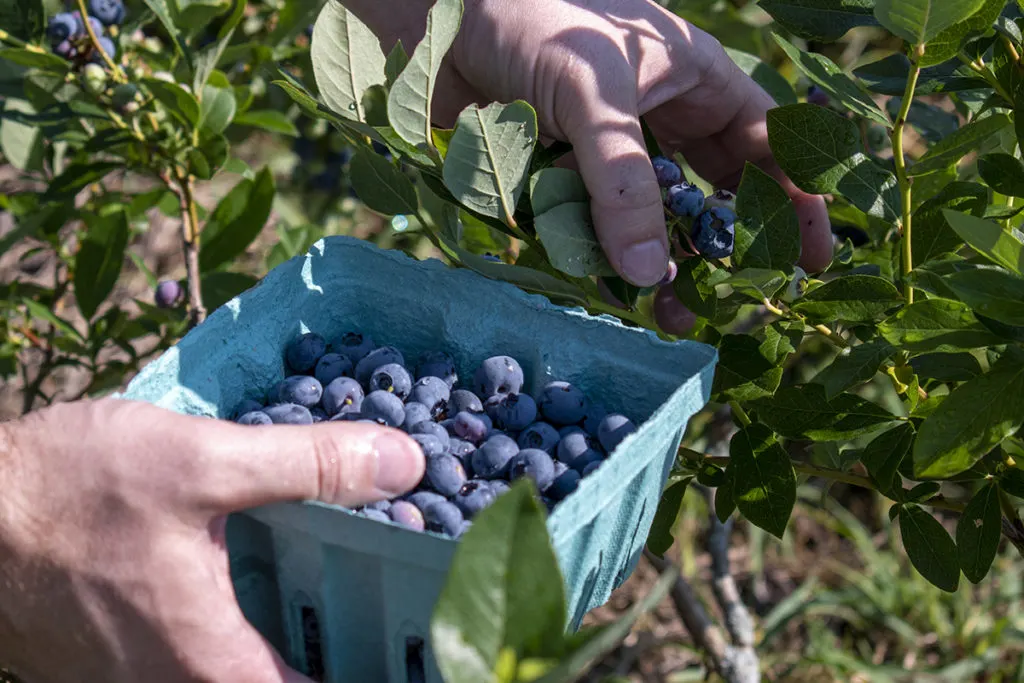
But beyond all that, one of the most important things you can do to ensure your blueberry bushes produce berries year after year is to prune them annually.
Pruning any fruit-bearing plant seems to make most novice gardeners break out in a cold sweat. But I promise, it’s not nearly as difficult as you would think, and after a couple of seasons, the annual pruning of the blueberry bushes will be old hat.
We’ll cover a lot here, so it’s probably a good idea to read this piece at least twice before tackling the job. Let’s jump in, shall we?
Glossary
If you’re new to pruning and maintaining small fruit crops, such as blueberries, you’ll likely encounter a few words you might be unfamiliar with. Let’s tackle that first.
Crown – this is the base of the bush, where the growth comes out of the ground.
Cane – these are what we call stems that are at least a year old. They begin as long new growth that happens in late summer, starting out green and turning red-brown as they age. They will start to appear woody after the first year or two.
Fruit-wood – these are canes that are capable of bearing fruit.
Shoots – new, scraggly growth that shows up quite often in the crown.
Fruit bud – a bud that will produce fruit.
Leaf bud – a bud that will produce leaves.
Why Do I Need to Prune My Blueberry Bushes?
If you’ve ever collected wild blueberries on the side of the road or in the woods, then you’re probably wondering why you need to prune the bushes growing in your garden. After all, they get along just fine out in the woods; why not let nature take its course in your garden as well?
The blueberries we grow in our backyards have been bred and cultivated specifically for that purpose.
They are meant to be cared for. Not only that but they are meant to be cared for in a specific manner. Sure, you can do it the way mother nature does, but you’ll achieve the same results as in the wild – feast or famine depending on a multitude of uncontrolled variables.
Because they are cultivated to be raised in your garden, when we take the time to give them consistent care, they reward us with buckets full of tender, sweet berries, year after year.
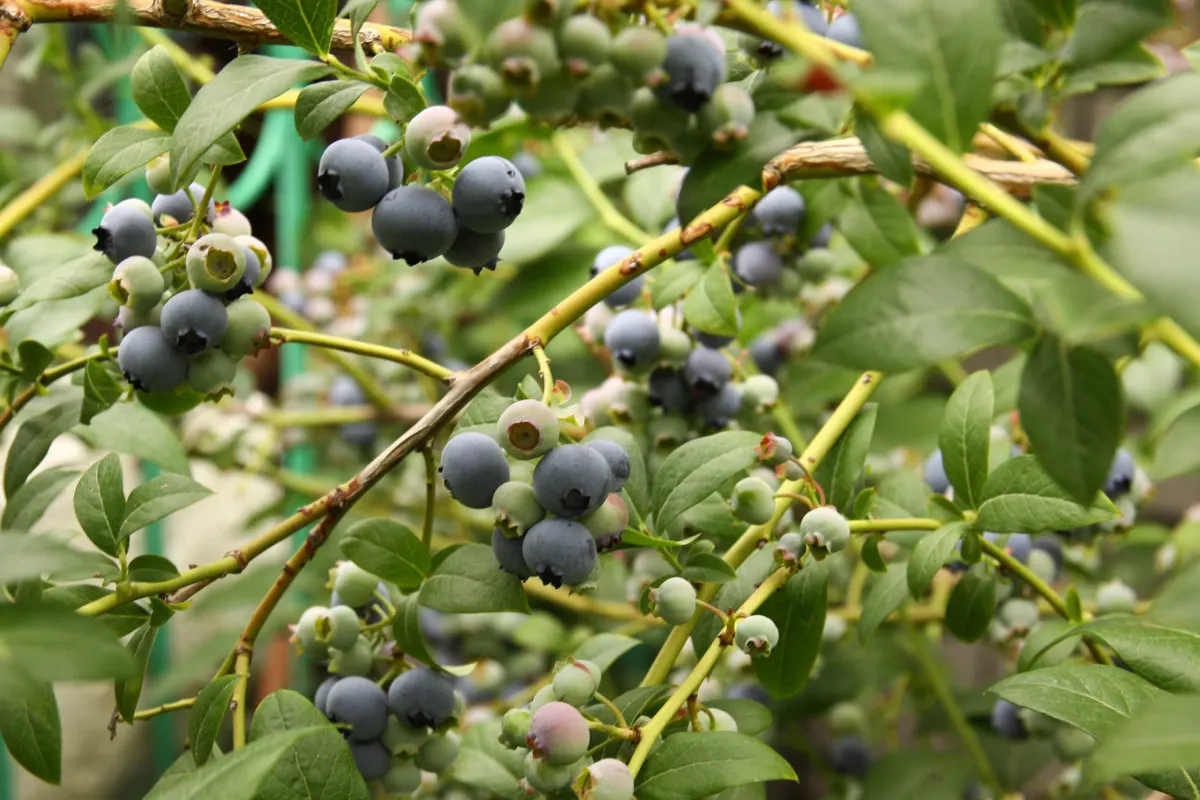
Blueberries are a long-game addition to your property.
They require two to three years of specific care to establish when new. Once established, the bushes require annual care and pruning to ensure their overall health and continued fruit production.
A few of the most important reasons we prune blueberries are to:
- establish the overall health and shape of a new plant – the first two years after planting a new blueberry bush are spent pruning it to force new growth both above and below the ground.
- encourage new growth of fruiting canes – older canes produce less fruit, so we want to prune both to remove older growth and to encourage new growth as the bush ages.
- allow light and airflow within the middle of the plant.
- prevent the plant from growing in a manner that will cause lower fruit yield or disease.
The Right Time to Prune Blueberry Bushes
You should never prune the plant while it’s actively growing or setting fruit. The leaves collect energy from the sun for photosynthesis, which allows the plant to make and store the energy it needs to produce new canes and buds – lots of blueberries.
If you prune the plant during its active growing season, you’re reducing the amount of energy the plant can make and store.
For this reason, it’s best to prune blueberry bushes while the plant is dormant in the winter.
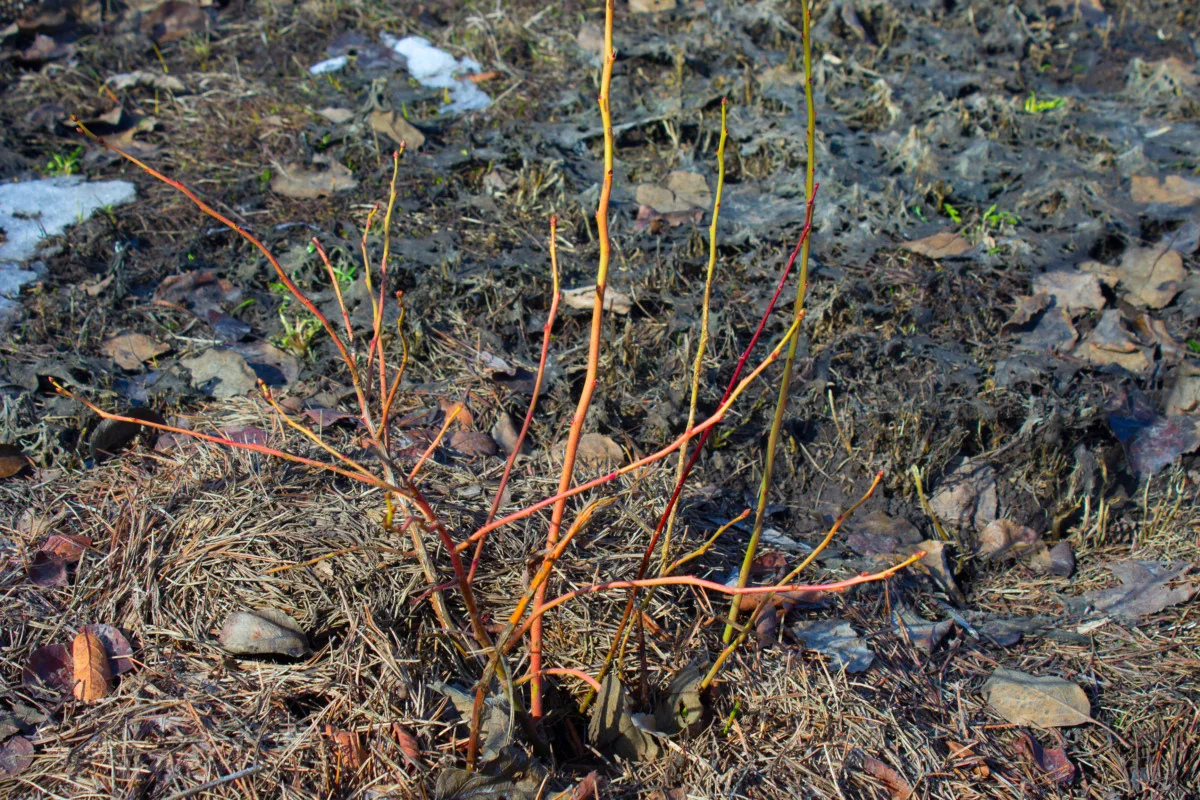
The ideal time is late winter, just before we come into spring. Essentially, you want to be out of the coldest part of the season before things start to warm up and grow again. For most of us, this is sometime in February or March.
At this time, you can prune out areas that have suffered cold damage over the winter, and waiting until later in the season will ensure the plant doesn’t suffer additional cold damage once it’s been pruned.
Blueberry Bush Pruning Tools
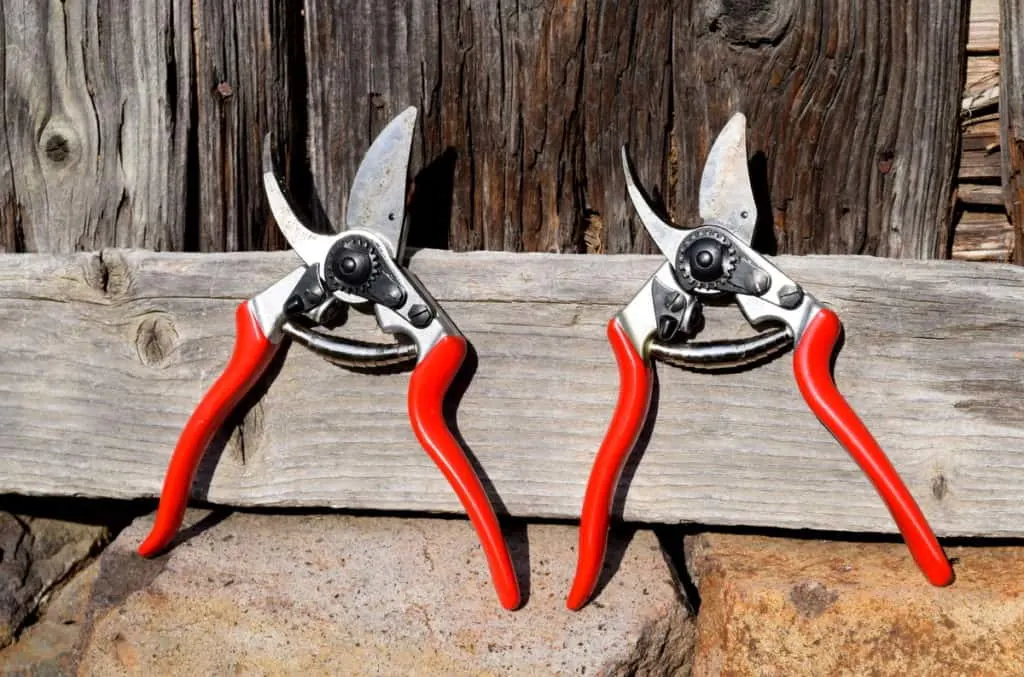
Gloves are always a good idea when pruning. While blueberries don’t have thorns, old growth can be scratchy, and it can be uncomfortable reaching into the bush barehanded.
A sturdy pair of hand pruners such as these Corona pruners are perfect for pruning small shoots and thinner canes.
If you’re dealing with older, much woodier and thicker growth, you’ll want a pair of loppers (the long-handled pruners with the curved blades at the end) or a small handsaw.
Regardless of your tool, it’s important to sterilize it before you begin cutting and once you’ve finished. You’re putting years of work into your berry bushes; make sure you don’t lose any to cross-contamination from cutting diseased plants elsewhere.
Young Plant Maintenance
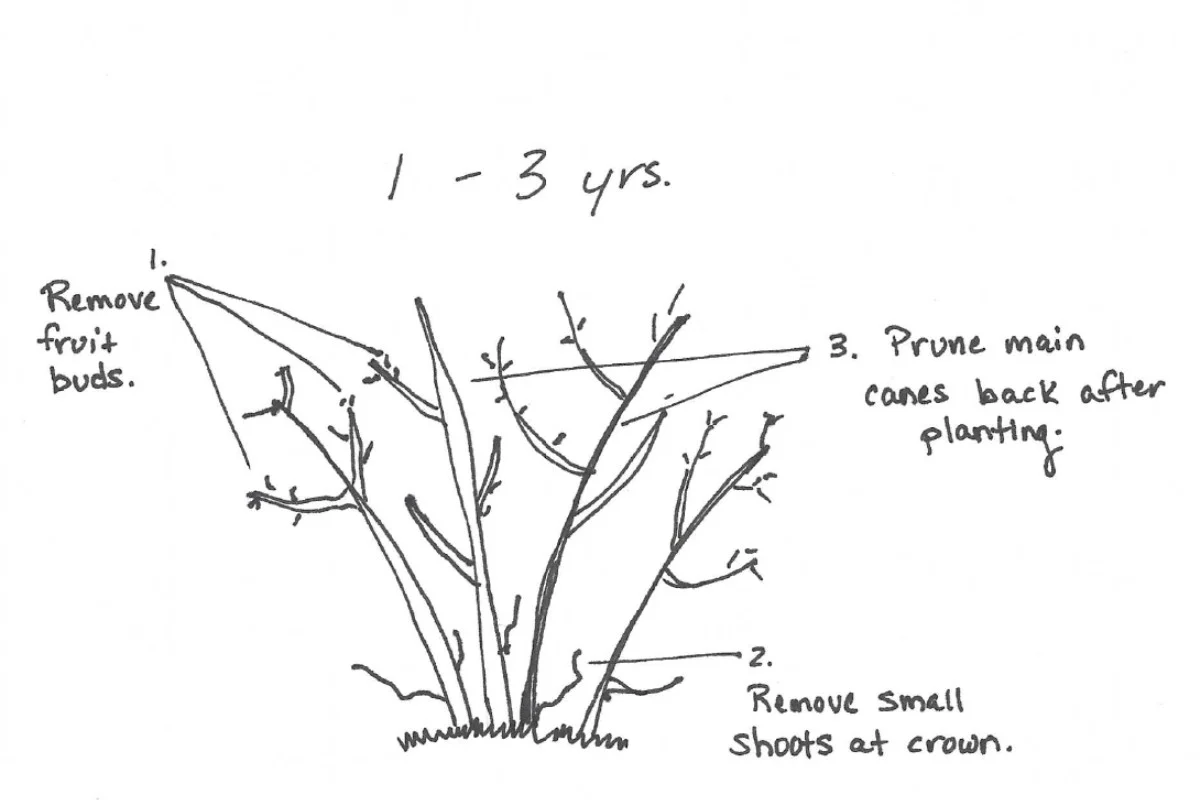
Pruning plan for young blueberry bushes: prune immediately after the bush has been planted, then remove fruiting buds for the first couple of years.
The first time you prune will be after you plant a new blueberry bush in the ground. Once it’s had a week to recover, go back and trim out any thin growth near the crown. Next, you will want to prune the tall, young canes by about 8” – 10”. This will help set up the plant for future growth.
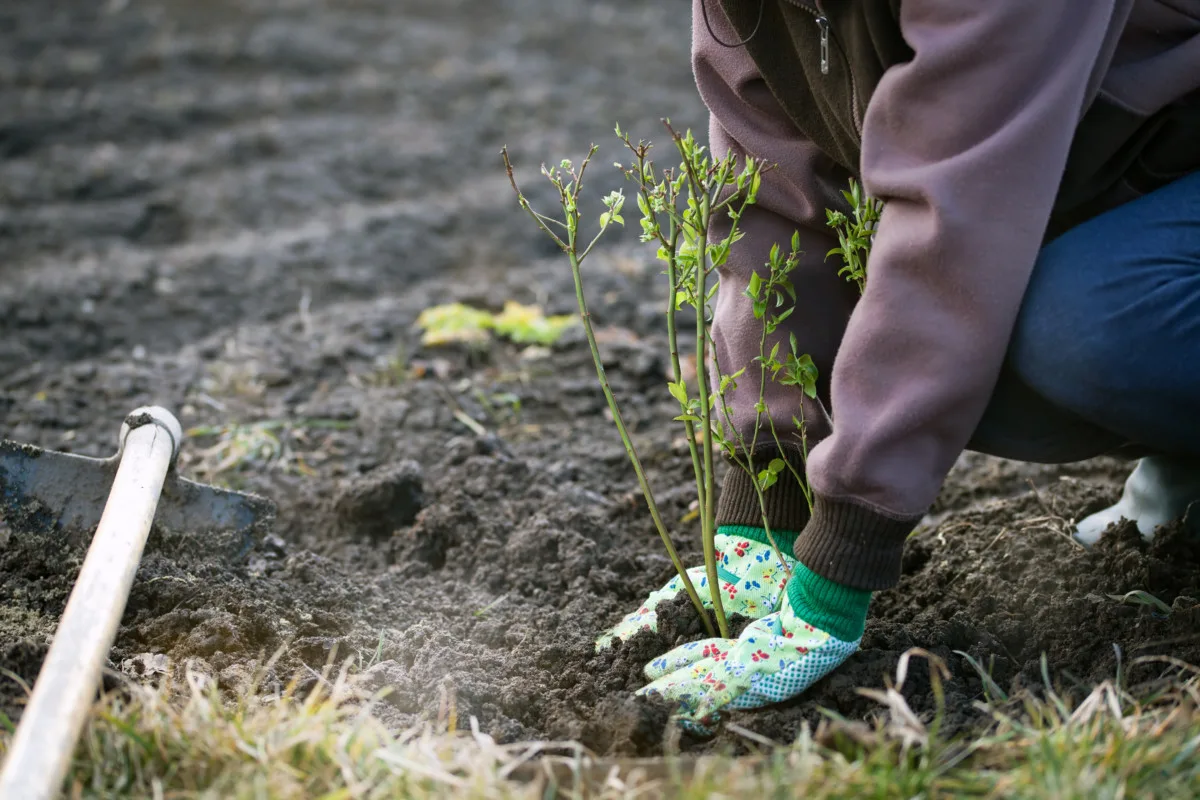
New plants need different pruning and care than older, established plants. If you want to give your plant the best shot at being a prolific bearer, prevent new blueberry bushes from bearing fruit for the first two years.
This means when you’re pruning for the first couple of years, you will trim off the tips of the canes where fruit buds have developed.
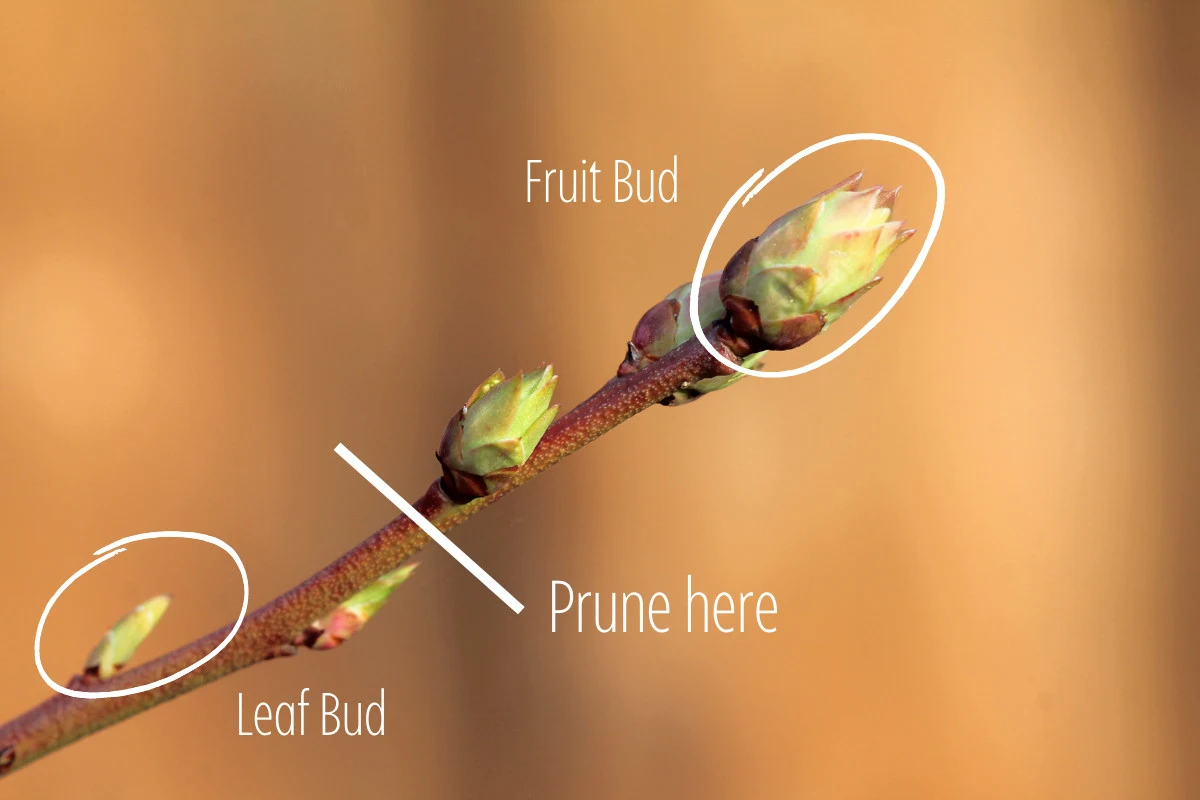
You can tell the difference between fruit and leaf buds by their appearance and where they’re growing on the plant. Fruit buds grow at the very tips of the canes and are more rounded than leaf buds. Leaf buds grow further down the cane and are slimmer and more pointed, growing closer to the cane.
By removing the fruit buds for the first two years, you’re conditioning the plant to put its energy into developing deep roots and a strong crown rather than fruit. This strong plant development, in turn, means higher yields in subsequent years.
If you want to harvest blueberries for many years to come, it’s best to be patient and put in the work for healthy, high-yielding plants further down the road.
Maintaining Older, Established Plants
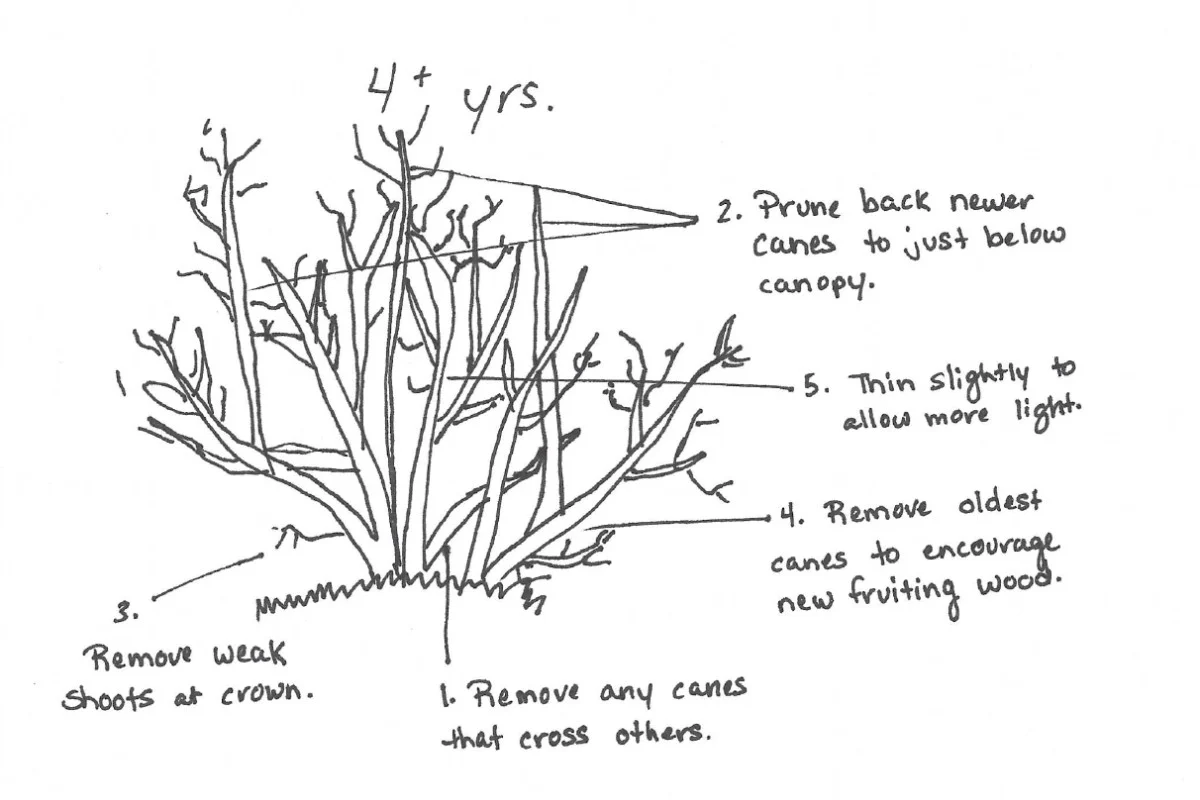
Pruning plan for older blueberry bushes: remove small, weaker growth at the crown, remove older canes to encourage new growth, and head large, new canes to slightly below the canopy.
It’s best to visualize the finished shape you’re going for before you start making cuts. Walk around the bush, noting any canes rubbing against each other, where more light might need to come into the center of the bush, scraggly new growth and the general size and shape of the plant.
One of the first things to do is clean up the crown. Remove any thin, scraggly shoots that have sprouted at the crown. They are too small and will be crowded out by the thicker canopy overhead. Leaving the thicker canes will also give you more berries in the long run.
When pruning younger canes, remember that they grow quickly, so trim them 4” – 6” lower than the top of the bush. You will also encourage more lateral growth, which means more berries. They will fill in nicely in the coming season.
Thin the top slightly if the interior of the plant needs more light and air.
As the bush ages, older canes will bear less fruit.
Once the plant reaches five to seven years, you’ll want to begin renewal pruning, with the goal of always thinning out the oldest canes and pruning to encourage the growth of new ones.
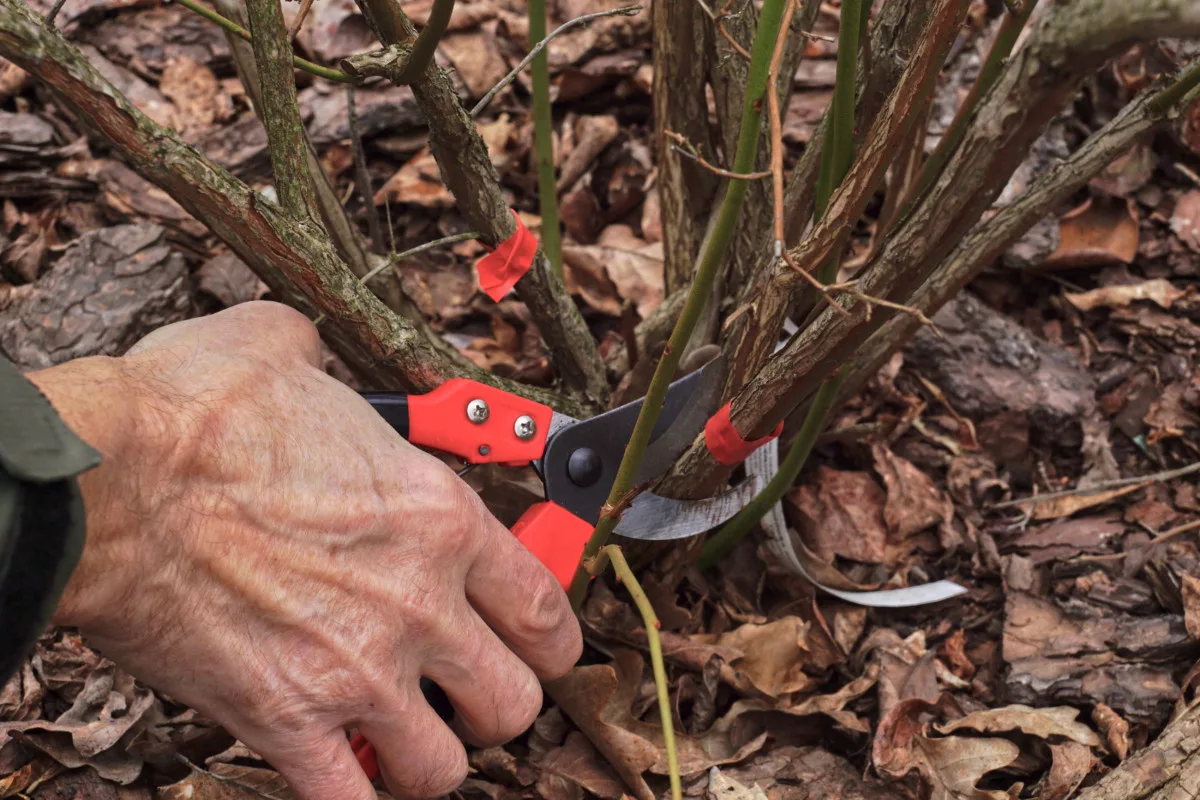
You should aim to remove 20% of the crown’s oldest canes each year when removing old canes. For rabbit-eye varieties, prune old canes back to about six inches high; for highbush varieties, prune old canes back to ground level. The new growth for each variety will be stronger and yield more berries when pruned in this way.
The goal is to have a blueberry bush with an equal mix of old and new canes to ensure a good harvest.
Neglected Bushes
You can revive a blueberry bush that has been neglected or pruned incorrectly by giving it a hard trim. Remove dead canes first, and then remove enough old canes to open up the plant’s canopy again. This will let in more air and light while encouraging the bush to set new canes.
This process can take several years to correct, so replacing the bush with a new one may be easier.
Repotting & Pruning Blueberries Grown in Containers
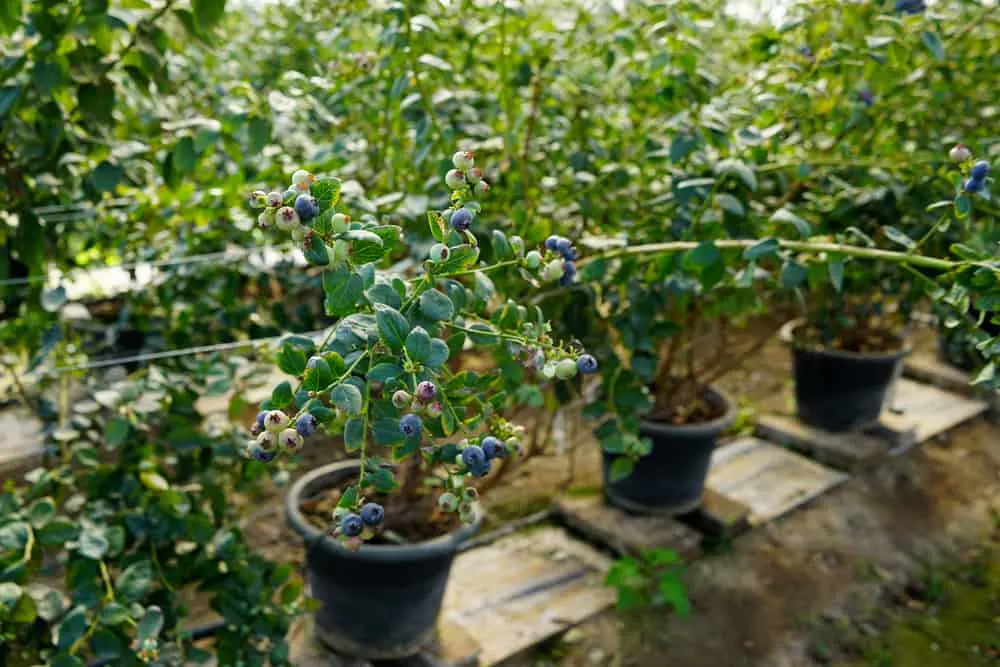
When growing blueberries in containers, you will prune them in much the same way, except when they need to be repotted. If the blueberry bush has become root-bound, you must trim the roots back before repotting it. In this case, you will need to prune the bush more aggressively as the smaller root system won’t be able to maintain the existing canes. If repotting and trimming the roots, prune the bush back by about 50-60%.
In the end, this simple task will ensure your plants remain healthy for many years to come. And by prompting them to put out new canes each year, your blueberry bushes will reward you with a bounty of tasty berries each summer. Of course, now you’ll need some ideas on how to use all those delicious blueberries.



